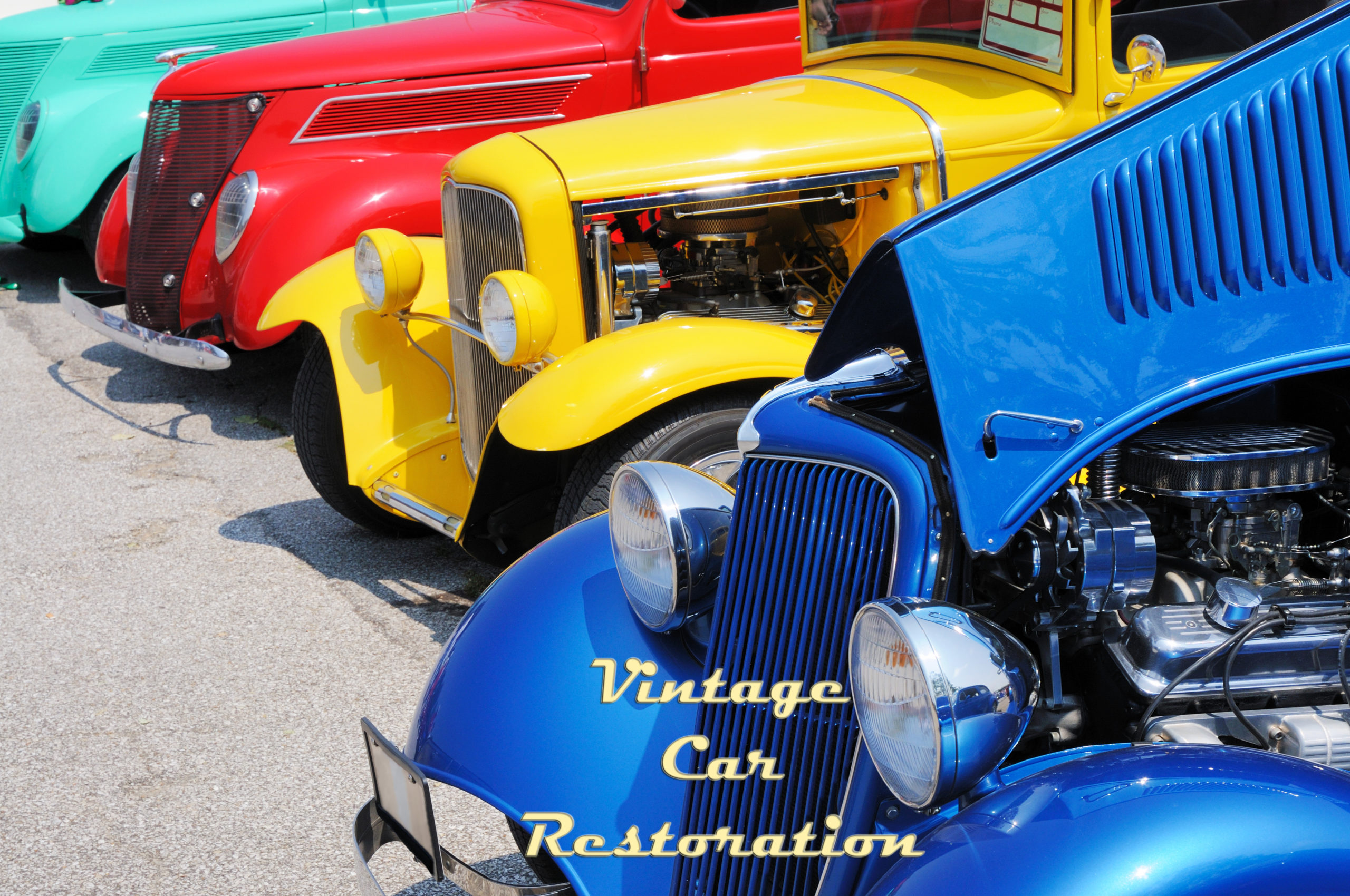
The past is calling. Which classic cars are you driving?
Vintage car restoration is booming. American-made Hot Rods, Muscle Cars, and Antique Autos usually find their way to collectors and car shows. More people are seeking antique cars and restoring them to how they appeared when they rolled off the assembly line for the first time.
When did car collecting and restoration become popular? What are the best American vintage cars to restore? And how did Super Alloy 1 change the car restoration game? Read on for everything you need to know about vintage car restoration.
The History of Car Collecting & Restoration in the US
Car restoration as a hobby began as early as the 1930s. People would find junked, broken, resold, or otherwise forgotten old cars and restore them to working function.
Consumers began to collect cars post-WWII while car restoration as a hobby broadened. There was an immense amount of innovative talent during the 1950s. By the late 1950s, the “Big Three” (General Motors, Ford Motor Company, and Chrysler Corporation) dominated new car sales.
As the decades passed, the demand for collecting old cars grew. By 1973, the US saw a massive boom in the foreign car market, making American-made vintage vehicles all the more sought after.
What’s the Difference Between Classic, Vintage, and Collector Cars?
“Classic” shouldn’t be used interchangeably to describe any old car that looks like it doesn’t belong on the roads with the modern daily drivers.
If you’re new to the world of classic and antique cars, you may be wondering which category your vintage car restoration falls in. There’s a lot of confusion surrounding what exactly a “classic” car is and what sets a classic apart from “vintage” and “antique” models.
Here’s a quick breakdown of the general rules for differentiating classic, vintage, and antique cars.
- Classic Cars – Usually, to claim a classic car title, a vehicle must be at least 20 years old. Cars made in 1980 or later are considered collector cars.
- Vintage Cars – Vintage cars are vehicles built between 1919 and 1930.
- Antique Cars – To be considered an antique car, the vehicle will need to be over 45 years old. For example, cars made from 1900 to 1979 are considered either antique or classic.
Keep in mind this is a general overview because it’s difficult for everyone to agree on a set definition. When it comes to State DMVs, insurance companies, and classic car clubs, each one may classify vehicles differently. In most cases, classifications will overlap between classics and antiques.
What are the Best American Vintage Cars to Restore?
While it’s up to your personal preferences, here’s a list of the most popular, expensive, and sought-after vintage cars to restore.
1967–1969 Chevy Camaro: The Camaro is one of the most popular classic American cars to restore. The first generation of this compact performer by Chevy was built from 1967 to 1969 and featured every engine family in Chevy’s lineup. There’s a Camaro for every type of car restoration enthusiast, and virtually every part is reproduced.
1964–1972 Chevy Chevelle: This midsize hotrod was one of America’s favorite muscle cars. The Chevelle first hit the market in 1964, just in time to ride the muscle car wave. There are plenty of original Chevelles still around today, making them slightly easier to restore.
1968–1972 Chevy Corvette: Nothing really screams Americana like an old Corvette. These cars combine the perfect mix of beauty, engineering, power, and historical significance. Corvettes from 1968 to 1972 are currently the most popular.
1964–1973 Ford Mustang: Up next is the beloved Ford Mustang. First-generation Mustangs were built between 1964 and 1973. Most Ford enthusiasts have an old Mustang at the top of their most-desired list. These cars make a great vintage car restoration project because they are relatively inexpensive to acquire. There’s a lot of information readily available about them for restoration help, and parts are not too difficult to find.
Tip: If you’re looking to save some money on your next project, consider a Mustang in coupe or convertible form, they’re generally less expensive.
1932 Ford: If you’re on the hunt for the ultimate vintage automobile. It’s the 1932 Ford. The Deuce was the world’s first popularly priced car to deliver a V8 engine, and this car has been a sensation in the marketplace for nearly a century.
Did you know this car sold new for as little as $485 in 1932?
Repairing American Vintage Cars the Right Way
Vintage cars have been considered collector’s items for the better part of a century. Some car parts were only manufactured when the vehicle was manufactured, meaning collectors have to locate the original cars to find replacement parts. Plenty of old car collectors spend hours scouring the junkyards, the internet, and mom & pop auto shops for a missing part.
This is where Super Alloy 1, a low-temperature multi-metal and pot metal solder, comes in handy. Before Super Alloy 1, many classic car collectors used Bondo fillers to patch body damage, which is frowned upon because classic cars should be 100% original. With Super Alloy 1, car restoration specialists repair pits in the parts and build up broken or missing parts for these rare pieces while preserving the vehicle’s integrity.
